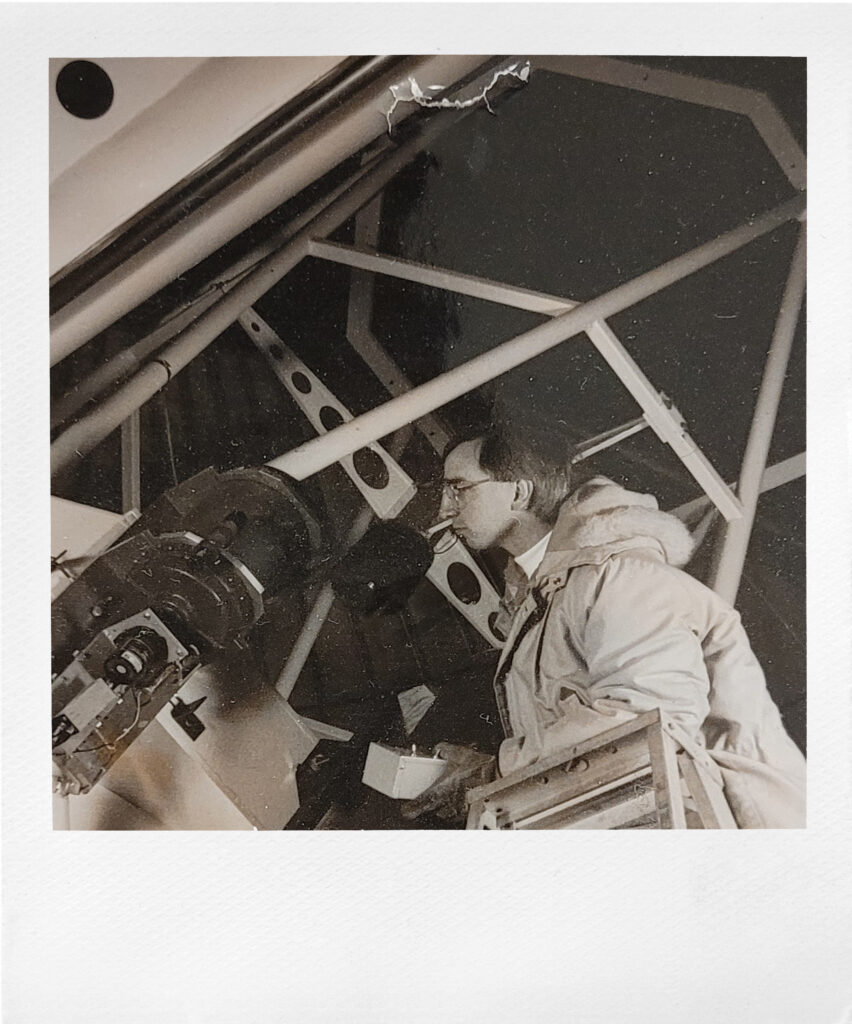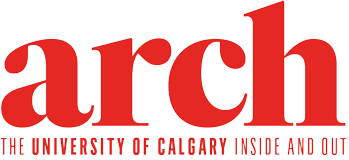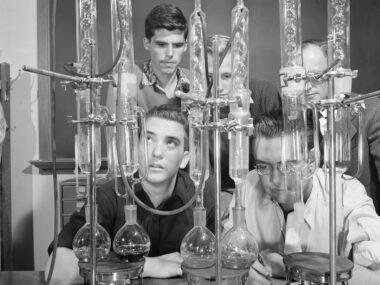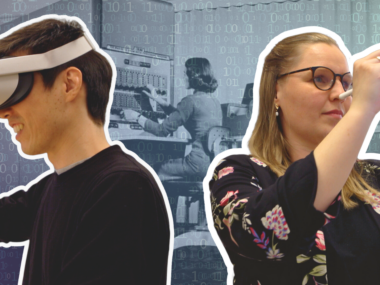
Written by Jaelyn Molyneux, BA’05
Star light, star bright / first star I see tonight…
Often, when we look up into the clear night sky, our wonder and awe is accompanied by a comforting familiarity. Indeed, the galaxy appears the same as it did when we were kids making wishes on stars that seem fixed in place. If you’ve ever stargazed through a telescope at the Rothney Astrophysical Observatory (RAO), however, you know how tremendously dynamic the night sky really is.
“You can point a beautiful telescope with a sensitive detector at the sky and see from night to night, hour to hour, that there are things moving and changing,” says RAO director Dr. Phil Langill, BSc’85, PhD’94. “There are very tiny changes — but they can reveal something that is so mind-boggling,”
The RAO is owned and operated by the Faculty of Science. It’s been a hub for serious stargazing ever since it opened in 1972 on a quarter-section of land, off Highway 22 southwest of Calgary, donated by local rancher Sandy Cross. Back then, the observatory had two trailers, an observation deck, a 41-centimetre telescope and a dome.
As technology became available, the observatory’s tools were upgraded. Now, RAO’s collection includes a 1.8-metre Cassegrain telescope, a 40.5-centimetre Newtonian telescope and the Baker-Nunn telescope — all used to spot comets, asteroids, even exoplanets, and to monitor the tiniest flickers of brightness in stars and abnormalities in the night sky.
The RAO’s location, equipment and the experts who work there have long attracted astronomers from around the world who access our telescopic views for their own research. The state-of-the-art technology also keeps undergraduate students sharp and makes the RAO one of the best training facilities in Canada.
When Langill first accessed the observatory as an undergraduate student in the 1980s, his astrophysics class would pile into a bus and trek out to the observatory, hoping for clear skies. They’d collect data and bring it back to campus on floppy disks. Now, his undergraduates gather in a classroom on the main campus in Science B. They can see live images of the sky above the observatory and operate the telescopes remotely. “When they’ve got enough data for their project, they turn everything off, close the door, high-five one another and get to work on the assignment,” Langill says.
Still, nothing beats the buzz of being at the observatory in-person. Over the years, more than 100,000 school-age kids have passed through on field trips. Late-night public open houses often have the energy of a crowded party with groups excitedly clustered around telescopes, spilling onto the walkways, and ooh-ing and ahhh-ing at stars. On those nights, Langill says, the RAO’s popularity can be a challenge, but it’s one that he is happy to take on.
“People come here and are stoked about the observatory. They talk to the scientists and look through the telescopes to learn something about the universe,” he says. “You can discover the most incredible stuff.”

Dr. Phil Langill, Bsc’85, PhD’94, director of the Rothney Astrophysical Observatory fell in love with the sky when he saw Saturn from a telescope in his northwest Calgary backyard at age 14. Here he is, circa 1991, with the ROA’s A.R. Cross Telescope.



